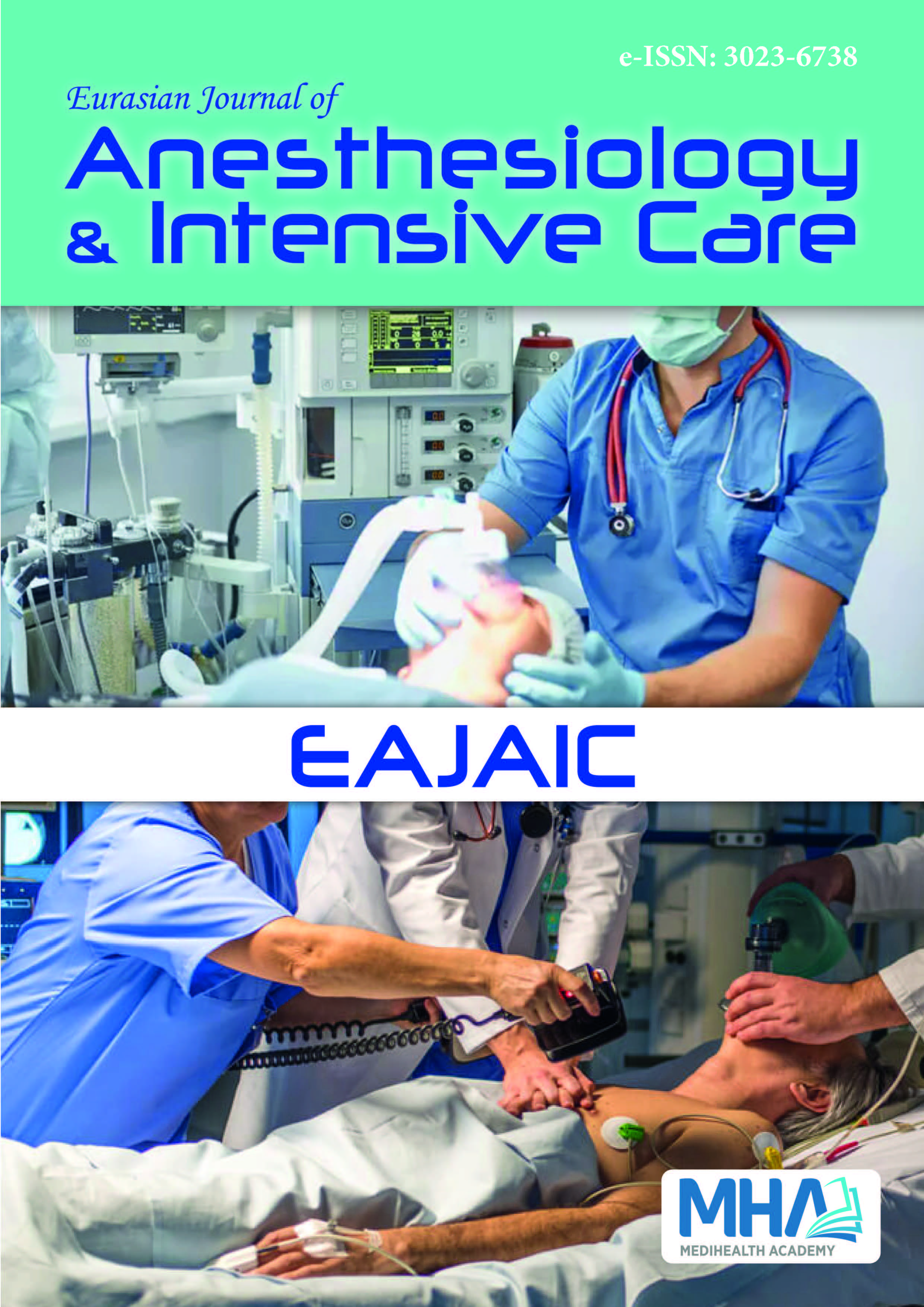1. Patel K, Hadian F, Ali A, et al. Postoperative pulmonary complications following major elective abdominal surgery: a cohort study. <em>Perioperative Med</em>. 2016;5(1):10. doi:10.1186/s13741-016-0037-0
2. Weiser TG, Regenbogen SE, Thompson KD, et al. An estimation of the global volume of surgery: a modelling strategy based on available data. <em>Lancet</em>. 2008;372(9633):139-144. doi:10.1016/S0140-6736(08)60878-8
3. Khan NA, Quan H, Bugar JM, Lemaire JB, Brant R, Ghali WA. Association of postoperative complications with hospital costs and length of stay in a tertiary care center. <em>J Gen Intern Med</em>. 2006;21(2):177-180. doi:10.1111/j.1525-1497.2006.00319.x
4. Miskovic A, Lumb AB. Postoperative pulmonary complications. <em>Br J Anaesth</em>. 2017;118(3):317-334. doi:10.1093/bja/aex002
5. Jammer I, Wickboldt N, Sander M, et al. Standards for definitions and use of outcome measures for clinical effectiveness research in perioperative medicine: European Perioperative Clinical Outcome (EPCO) definitions: a statement from the ESA-ESICM joint taskforce on perioperative outcome measures. <em>Eur J Anaesthesiol</em>. 2015;32(2):88-105. doi:10.1097/EJA.0000000000000118
6. Shander A, Fleisher LA, Barie PS, Bigatello LM, Sladen RN, Watson CB. Clinical and economic burden of postoperative pulmonary complications: patient safety summit on definition, risk-reducing interventions, and preventive strategies. <em>Crit Care Med</em>. 2011;39(9):2163-2172. doi:10.1097/CCM.0b013e31821f0522
7. Gattinoni L, Tonetti T, Cressoni M, et al. Ventilator-related causes of lung injury: the mechanical power. <em>Intensive Care Med</em>. 2016;42(10):1567-1575. doi:10.1007/s00134-016-4505-2
8. Giosa L, Busana M, Pasticci I, et al. Mechanical power at a glance: a simple surrogate for volume-controlled ventilation. <em>Intensive Care Med Exp</em>. 2019;7(1):61. doi:10.1186/s40635-019-0276-8
9. Cressoni M, Gotti M, Chiurazzi C, et al. Mechanical power and development of ventilator-induced lung ınjury. <em>Anesthesiology</em>. 2016; 124(5):1100-1108. doi:10.1097/ALN.0000000000001056
10. Serpa Neto A, Deliberato RO, Johnson AEW, et al. Mechanical power of ventilation is associated with mortality in critically ill patients: an analysis of patients in two observational cohorts. <em>Intensive Care Med. </em>2018;44(11):1914-1922. doi:10.1007/s00134-018-5375-6
11. Senturk E, Ugur S, Celik Y, Cukurova Z, Asar S, Cakar N. The power of mechanical ventilation may predict mortality in critically ill patients. <em>Minerva Anestesiol</em>. 2023;89(7-8):663-670. doi:10.23736/S0375-9393. 23. 17080-5
12. Yang CK, Teng A, Lee DY, Rose K. Pulmonary complications after major abdominal surgery: national surgical quality ımprovement program analysis. <em>J Surg Res</em>. 2015;198(2):441-449. doi:10.1016/j.jss.2015.03.028
13. Haines KJ, Skinner EH, Berney S, Austin Health POST study ınvestigators. Association of postoperative pulmonary complications with delayed mobilisation following major abdominal surgery: an observational cohort study. <em>Physiotherapy.</em> 2013;99(2):119-125. doi:10.1016/j.physio. 2012.05.013
14. Roukema JA. The prevention of pulmonary complications after upper abdominal surgery in patients with noncompromised pulmonary status. <em>Archives Surg</em>. 1988;123(1):30. doi:10.1001/archsurg.1988. 01400250032004
15. Saracoglu A, Yavru A, Kucukgoncu S, et al. predictive factors ınvolved in development of postoperative pulmonary complications. <em>Turkish J Anesthesia and Reanimation.</em> 2014;42(6):313-319. doi:10.5152/TJAR. 2014.50133
16. Reisli R, Akkaya ÖT, Arıcan Ş, et al. Pharmachologic treatment of acute postoperative pain: a clinical practice guideline of The Turkish society of algology. <em>Agri</em>. 2021;33(50):1-51. doi:10.14744/agri.2021.60243
17. Smetana GW, Lawrence VA, Cornell JE, American college of physicians. preoperative pulmonary risk stratification for noncardiothoracic surgery: systematic review for the American college of physicians. <em>Ann Intern Med</em>. 2006;144(8):581-595. doi:10.7326/0003-4819-144-8-200604180-00009
18. Mills E, Eyawo O, Lockhart I, Kelly S, Wu P, Ebbert JO. Smoking cessation reduces postoperative complications: a systematic review and meta-analysis. <em>Am J Med</em>. 2011;124(2):144-154.e8. doi:10.1016/j.amjmed .2010.09.013
19. Lawrence VA, Dhanda R, Hilsenbeck SG, Page CP. Risk of pulmonary complications after elective abdominal surgery. <em>Chest</em>. 1996;110(3):744-750. doi:10.1378/chest.110.3.744
20. Pasulka PS. The risks of surgery in obese patients. <em>Ann Intern Med. </em>1986;104(4):540. doi:10.7326/0003-4819-104-4-540
21. Canet J, Gallart L, Gomar C, et al. Prediction of postoperative pulmonary complications in a population-based surgical cohort. <em>Anesthesiology. </em>2010;113(6):1338-1350. doi:10.1097/ALN.0b013e3181fc6e0a
22. Kupeli E, Er Dedekarginoglu B, Ulubay G, Oner Eyuboglu F, Haberal M. American society of anesthesiologists classification versus ARISCAT risk ındex: predicting pulmonary complications following renal transplant. <em>Exp Clin Transplant</em>. 2017;15(Suppl 1):208-213. doi:10.6002/ect.mesot 2016.P89
23. Santer P, Zheng S, Hammer M, et al. Ventilatory frequency during intraoperative mechanical ventilation and postoperative pulmonary complications: a hospital registry study. <em>Br J Anaesth. </em>2020;125(1): e130-e139. doi:10.1016/j.bja.2020.02.018
24. Gattinoni L, Collino F, Camporota L. Mechanical power: meaning, uses and limitations. <em>Intensive Care Med</em>. 2023;49(4):465-467. doi:10.1007/s00134-023-06991-3
25. Serpa Neto A, Deliberato RO, Johnson AEW, et al. Mechanical power of ventilation is associated with mortality in critically ill patients: an analysis of patients in two observational cohorts. <em>Intensive Care Med. </em>2018;44(11):1914-1922. doi:10.1007/s00134-018-5375-6
26. Wu HP, Chu CM, Chuang LP, et al. The association between mechanical power and mortality in patients with pneumonia using pressure-targeted ventilation. <em>Diagnostics</em>. 2021;11(10):1862. doi:10.3390/diagnostics 11101862
27. Parhar KKS, Zjadewicz K, Soo A, et al. Epidemiology, mechanical power, and 3-year outcomes in acute respiratory distress syndrome patients using standardized screening. An observational cohort study. <em>Ann Am Thorac Soc</em>. 2019;16(10):1263-1272. doi:10.1513/AnnalsATS.201812-910OC
28. Santer P, Wachtendorf LJ, Suleiman A, et al. Mechanical power during general anesthesia and postoperative respiratory failure: a multicenter retrospective cohort study. <em>Anesthesiology</em>. 2022;137(1):41-54. doi:10. 1097/ALN.0000000000004256

